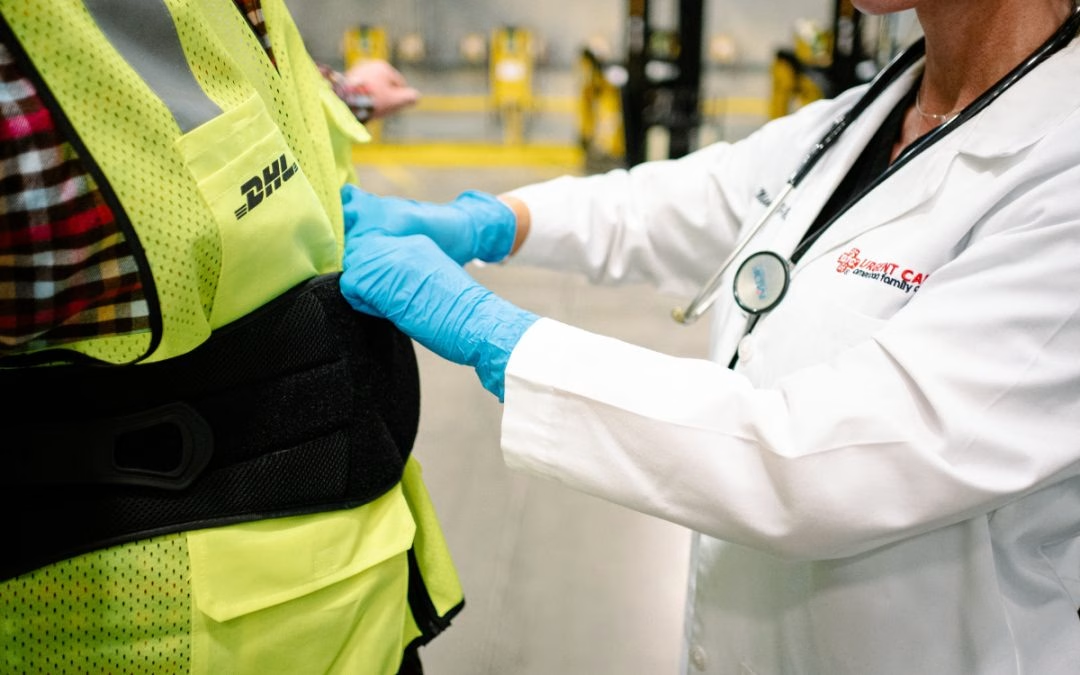
Hand, foot, and mouth disease (HFMD) is a common viral illness that primarily affects young children but can also spread to adults. Caused by the coxsackievirus, HFMD is highly contagious and spreads easily in environments where children are in close contact, such as daycares, schools, and playgrounds. While HFMD is typically a mild illness, it can cause significant discomfort and concern for parents and caregivers due to its characteristic rash, fever, and painful sores. Understanding the signs, symptoms, and timeline of HFMD is crucial in recognizing the illness early, ensuring proper care for your child, and making sure they get back to what they do best: exploring Huntersville.
What is Hand, Foot, and Mouth Disease?
Hand, foot, and mouth disease is a viral infection most commonly caused by the coxsackievirus, a member of the enterovirus family. The virus spreads through direct contact with saliva, nasal secretions, blister fluid, or stool of an infected person. HFMD is most prevalent in children under the age of five, but older children and adults can also contract the virus.
While HFMD is generally not serious, it can cause discomfort, and its symptoms can be concerning for parents. In most cases, the virus resolves within a week to 10 days. However, knowing what to expect and how to manage the symptoms at home can help make the illness more manageable for you and your child.
Common Signs and Symptoms of HFMD
HFMD progresses through a series of stages, with different symptoms appearing at various points in the illness. The most common symptoms include:
1. Fever
The first sign of HFMD is usually a mild to moderate fever. This fever may be accompanied by other symptoms such as a sore throat, loss of appetite, and general malaise. The fever typically lasts two to three days and is often the body’s first response to the virus.
2. Rash and Blisters
A hallmark symptom of HFMD is the appearance of a rash, typically on the hands, feet, and sometimes the buttocks. This rash usually begins as red spots that can develop into small, fluid-filled blisters. The rash is not itchy but can be tender or uncomfortable, especially for young children who may not fully understand what’s happening.
The rash usually develops a day or two after the fever begins and lasts for about five to seven days. In some cases, the rash may also appear on the knees, elbows, or other areas of the body, but it is most commonly found on the hands, feet, and mouth.
3. Mouth Sores
One of the more uncomfortable symptoms of HFMD is the development of painful sores inside the mouth. These sores, known as herpangina, can make it difficult for children to eat or drink. The sores usually appear on the tongue, gums, and inside of the cheeks and can be a source of significant discomfort.
It is important to keep your child hydrated during this stage, as mouth sores can make it painful to drink fluids, potentially leading to dehydration.
4. Sore Throat
Along with mouth sores, children with HFMD often experience a sore throat. This may contribute to the difficulty in swallowing and eating, further emphasizing the need for regular hydration and soft, bland foods that won’t irritate the sores.
5. Fatigue and Irritability
Like many viral infections, HFMD can cause general fatigue and irritability. Children may seem more tired than usual and may be more irritable or clingy during the course of the illness.
How Long Does HFMD Last?
The duration of hand, foot, and mouth disease varies but generally lasts between 7 to 10 days. Here is a general timeline of the illness:
- Days 1-3: The illness typically begins with a mild fever, sore throat, and a decrease in appetite.
- Days 3-5: The rash and blisters begin to appear, most commonly on the hands, feet, and inside the mouth. This is often the most uncomfortable phase of the illness.
- Days 6-10: The rash and sores begin to heal, and the fever subsides. Most children will start to feel better during this period, although the blisters may take a bit longer to fully heal.
While HFMD is typically mild and resolves on its own, it’s important to monitor your child’s symptoms closely to ensure there are no complications.
When to Seek Medical Care
In most cases, hand, foot, and mouth disease can be managed at home with rest, hydration, and over-the-counter medications to reduce fever and pain. However, there are situations when it’s important to seek medical care:
- Persistent Fever: If your child’s fever lasts more than three days or is higher than 102°F, it’s a good idea to consult a healthcare provider at AFC.
- Dehydration: If your child is not drinking enough fluids due to painful mouth sores and shows signs of dehydration (such as dry mouth, infrequent urination, or lethargy), they may need medical attention.
- Severe Symptoms: If your child appears to be in significant pain, has trouble breathing, or develops a rash that looks infected, it’s important to visit our urgent care center.
At AFC Huntersville, we’re open seven days a week, and walk-ins are always welcome. If you’re concerned about your child’s symptoms or need guidance on managing HFMD, our experienced medical team is here to help.
Hand, foot, and mouth disease can be an unsettling experience for both children and parents, but understanding its signs, symptoms, and duration can help you manage the illness more effectively. Most cases of HFMD resolve within a week to 10 days, with symptoms such as fever, rash, and mouth sores gradually improving. While the illness is generally mild, it’s important to monitor your child’s symptoms closely and seek medical care if complications arise.
If you’re ever in doubt or need medical assistance, visit AFC Huntersville for compassionate, expert care. Our team is dedicated to helping your family stay healthy and recover quickly from illnesses like HFMD.


